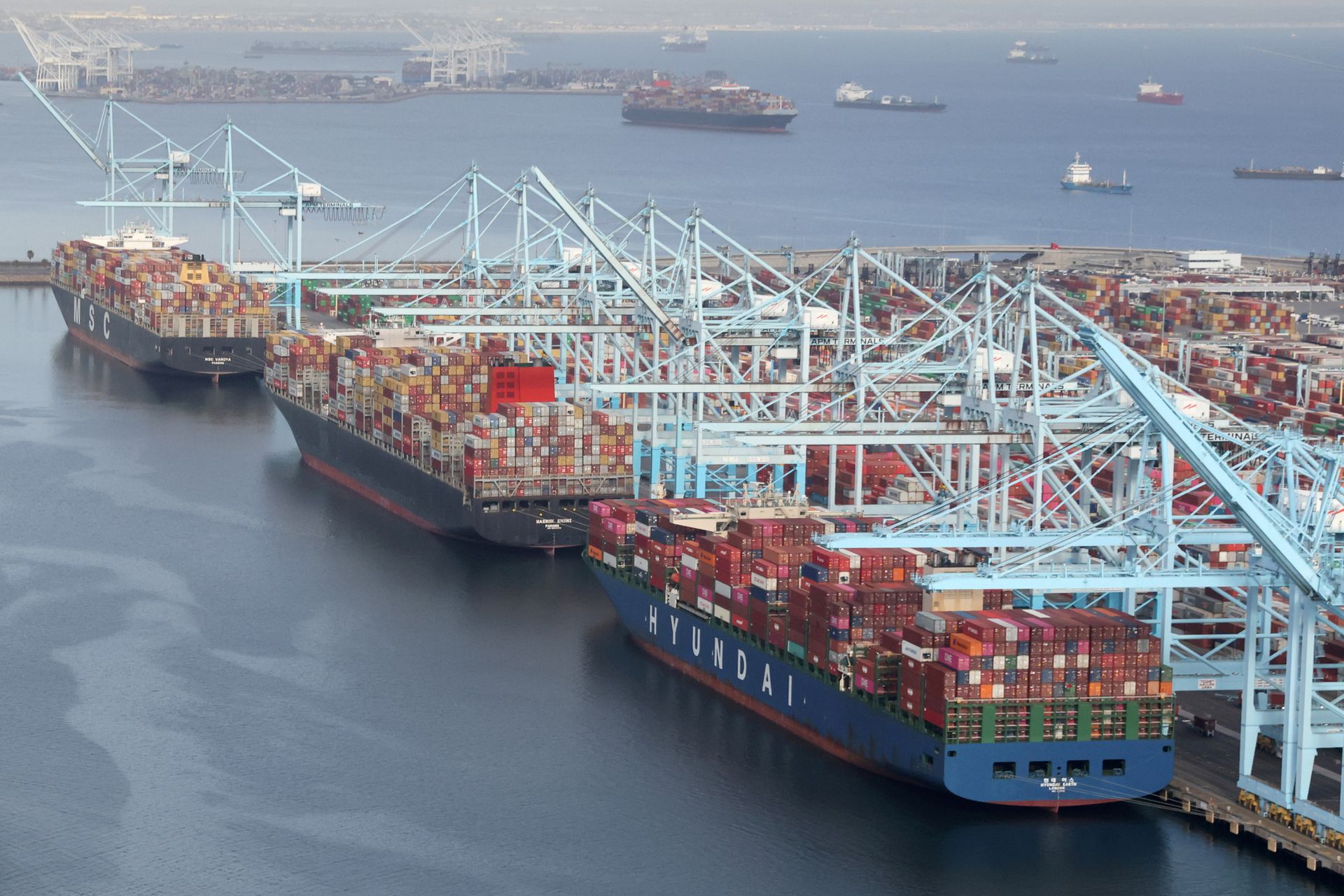Reprinted with permission from Export Today Magazine – August 1997
By Erika Morphy
Richard Kohn does not give up easily when structuring a complex overseas trade finance deal. “Don’t take it as gospel when your foreign counsel says you can’t accomplish a particular result,” he advises. “He or she may merely be saying they haven’t done it before.”
Kohn, a senior partner at the Chicago law firm Goldberg, Kohn, specializes in asset-based financing, particularly the use of overseas inventory as collateral. Not that Kohn works much with the borrowers in such transactions. His customers are usually banks and other commercial finance groups trying to better serve their clients, but who often run into all sorts of obstacles to structuring one of these less traditional deals.
These days, lenders are indeed refusing to take no for an answer, especially when prodded by more demanding borrowers. In the past few years, banks and other commercial lenders have clearly become more aggressive and flexible in their overseas activities, while more nonbank financiers — including even freight forwarders — have entered the trade finance market.
So whether your international business is large or small, take heart — it really is getting easier to float international deals. Of course, you may have to spend a lot of time on the phone urging your traditional lender to consider new forms of finance. And if they refuse, you may have to spend time searching out a new partner.
For inspiration though, Export Today for its annual Resource Guide describes five examples of transactions that would not have happened were it not for a combination of tenacity and creativity on the part of both borrower and lender. These deals took place because the participants would not take no for an answer.
Expanding Your Borrowing Base
The Deal
A manufacturer that exports metal products received an unexpectedly large order. It did not have the necessary working capital to begin manufacturing, but it did have about $3 million in receivables, $1 million of which were from overseas accounts. Unfortunately, its traditional lender insisted on excluding the $1 million from the manufacturer’s borrowing base.
The Solution
The manufacturer purchased an export credit insurance policy for a cost of some $30,000 on its $1 million in receivables. In return, the firm received a 75% advance rate from the bank — $750,000, which was enough to meet the first order. What’s more, every time the manufacturer receives another order from that same customer — which tends to happen four to six times a year — the company picks up another $750,000 for working capital, all for that initial $30,000 policy.
The Background
A broker of export credit insurance, in this case Global Commercial Credit (GCC) of Bingham Farms, Mich., helped this particular manufacturer purchase export credit insurance for its foreign receivables. Once the receivables were insured, GCC then helped the company package the loan request for its lender.
Using export credit insurance to get a bank to lend against your foreign receivables is not, of course, a new concept. But it was not until the last few years that such an option has been easily available in the United States — the improvement being due partly to the arrival of specialty brokers such as GCC, and partly to new entries into the U.S. credit insurance market.
Many come from Europe, where credit insurance is widely used to finance export transactions, says Victor Sandy, GCC’s vice president. “In the United Kingdom, there are at least 18 different credit insurance companies [whereas] in the United States, there are three or four big domestic credit insurance firms.”
“What is happening now is that the European market has become saturated, so companies are looking to the United States to increase market share, usually by partnering with local carriers and firms,” he says.
Baltimore-based Fidelity & Deposit, for example, was acquired recently by the Zurich Group and Nederlandsche Credietverzekering Maatschappij (NCM), one of the largest Dutch credit insurance companies. “A few months ago Maryland Netherlands Credit Insurance [the new company formed under the joint venture] began offering a seamless policy insuring domestic and export receivables and political risk coverage,” Sandy reports. “Their clients no longer have to coordinate multiple policies.”
GCC’s role, Sandy says, is to guide exporters to the right carrier, then help the firm structure a deal attractive to a lender. GCC has a list of lenders it works with, and it will also work with an exporter’s partner bank.
“We understand what carriers need for a particular deal to be profitable,” Sandy says. “We know who has what kind of appetite for what kind of deal, so we can structure something acceptable to both sides.”
Export credit insurance can also be used to save other sorts of very specialized deals.
One GCC client of custom-built assembly line equipment, for instance, refused to sell on open terms, because if the buyer defaulted during the manufacturing process, he couldn’t sell the equipment elsewhere since it’s built to client specifications. The potential loss was very great as it took three months to build, at a cost of $300,000.
Then one of the manufacturer’s long-term clients decided it no longer wanted to use letters of credit. The solution? In this case, GCC put together a nine-month contract coverage policy that protected their exposure during manufacturing. Usually, credit insurance takes effect only when a shipment leaves the dock.
A European Import
The Deal
Late in the bidding stage, a U.S. supplier of farm machinery learned about an opportunity to make a $500,000 sale to a manufacturer in Colombia. The buyer was already considering several other bids, so the manufacturer had to make a competitive offer immediately. But he did not want to offer open credit terms for fear of buyer default. U.S. Export Import Bank programs, meanwhile, were no longer available for deals in Colombia.
The Solution
The buyer and seller negotiated a forfait transaction.
Forfaiting is a financing technique in which payments due from the importer are guaranteed by a bank in the importer’s country. Forfait is most suited for transactions involving deferred payment terms over a number of years. Usually these are sales of capital goods from manufacturers to developing countries, such as those in Eastern Europe (where forfaiting originated 40 years ago). It is also often used in Latin America.
Essential to a forfait transaction is the aval (the buyer’s bank’s guarantee of the buyer’s credit) and the promissory note the importer’s bank provides. In a typical transaction, the buyer and seller negotiate an agreement regarding price and payment terms. In the case of the U.S. sale to Colombia, the two parties agreed to ten six-month notes for a total five-year term.
Once the agreement is set, the exporter or its broker consults a forfait house as to whether it will purchase the transaction. The forfait house gives an answer within a few days. What the forfaiter is purchasing is in essence the aval and promissory note from the importer’s bank.
Because these documents are negotiable instruments — compared to a contract, for example — they are easily traded in the international forfait market.
The exporter receives from the forfaiter the entire price of the contract over the five-year term, minus the forfait fee of course. He or she is now free from buyer nonpayment default. The exporter is liable, however, for the notes — they must be legal and enforceable. He also must ensure that the regulatory requirements of the importer’s country have been met. The buyer, meanwhile, has gotten a good interest rate (at least better than he probably would have gotten at a local bank) on a medium-term deal.
The Background
The growing acceptance of forfaiting is illustrated by London Forfaiters. Established in 1984 in London by two people, the company now has 17 offices in 15 countries, says Chantel Wittman, vice president of the Chicago branch. London Forfaiters is unique as it is one of the few independent commercial forfaiters — most forfait houses are branches of only the largest world banks.
“The old forfaiting connotation — that it is expensive and difficult to use — is changing,” says Wittman. In most cases, exporters can get a commitment within hours as to whether a forfaiter will finance a potential deal, she says.
Much of the growing acceptance of forfaiting is due not just to more providers entering the market (London Forfaiters opened their Chicago office at the beginning of the year, one of the few forfait houses to locate a branch outside of New York) but also to the increasing numbers of brokers that specialize in such deals.
One such company is British-American Forfaiting. “Most companies in our target market hardly know how to spell forfaiting, much less access it,” says Robert Pennell, owner of the Houston brokerage.
On the brokerage side, he says, there are “a limited number of firms such as ourselves that can structure these deals and place them with these houses.” There are about a dozen European primary forfaiters with U.S. operations, Pennell adds.
If nothing else, British-American saves its clients a lot of legwork and time. “We survey the market to get the exporter the best price. If we go to one house and find they are off cover [won’t do business in] a particular country, we will find a [house] where they do have an appetite for that deal. One time we went to 23 different places,” Pennell says.
Banking on Change
The Deal
A U.S. medical supplier received a $300,000 order from a new client — a distributor in Mexico. The distributor, however, could not afford to have its capital tied up in a letter of credit. The U.S. supplier, for its part, wanted to make the sale but was afraid of taking a chance on an unknown customer, especially in the wake of the peso crisis.
The Solution
The exporter arranged for a “discount” letter of credit.
In this case, the exporter’s bank, BankBoston, arranged payment terms with the distributor that did not entail freezing a portion of its credit line, as an LC would have. On the other end, the bank paid the exporter immediately for the order. “The buyer got better rates and terms than he would have in Mexico, the seller gets paid right away,” says Ben Schwartz with BankBoston. “This is a very simple technique that is not widely used by many banks.”
The Background
Commercial banks are becoming just as innovative as their nonbank counterparts and competitors. Just getting financing on your foreign receivables has become far easier in the last five years, partly due to the growing number of clients who are demanding such services. Many are smaller banks, which now routinely lend against foreign receivables, primarily through the support of the U.S. Export Import Bank. In some cases, the change has been dramatic. First National Bank of New England only began its export finance program in the early 1990s, yet recently it was named the 1997 Small Business Bank of the Year by Eximbank.
Larger banks with global networks are also exploring new options and avenues to keep existing customers happy, and draw new ones. “We can see that our clients’ business practices are changing,” says Thomas Kingston, managing director, Global Trade, for BankBoston. “They are sourcing more and selling more in unfamiliar markets. We are structuring our financing and delivery capabilities to meet those needs.”
Like discount letters of credit, many of these programs are based on old techniques packaged to meet new needs. Royal Bank of Canada, for example, has just announced a new loan product to finance foreign accounts receivable. It is similar in structure to most receivables finance programs except it gives the company cash for 100% of the value of its sales to pre-approved customers before the sales invoices are actually paid. Executives from the bank believe that their subsidiary, RBC Trade Finance, is the only bank engaged in this particular activity in the United States.
WHEN YOUR ASSETS ARE OVERSEAS
The Deal
A U.S. supplier of tableware wanted a bank loan to expand sales in overseas markets. The company owned about $10 million worth of inventory that it planned to use as collateral for the loan. The problem? Most of his inventory was stored in a warehouse in Belgium, and under Belgian laws it was necessary to have possession of the inventory for the lender to be able to acquire a lien. The situation was further complicated because the supplier needed day-to-day access to his inventory in order to continue his operations.
The Solution
“We brought in a collateral control agent [a private agent that assures that title and control of the assets are in compliance with local law and the lender’s instructions],” says Kohn of Goldberg, who advised the lender in this transaction. “We had an agreement with the warehouse that inventory would never drop more than a certain amount so at all times we knew a certain amount of inventory was supporting our lien.” The U.S. firm received a $30 million loan from Kohn’s lender client, using the inventory of tableware in Belgium as part of the collateral.
The Background
In theory, asset-based financing for international trade is a relatively simple process: a firm’s accounts receivables, or its inventory, or a mixture of the two, are used to secure cash advances on a revolving basis. The lender then advances a certain amount, 50% for example, of the inventory, and perhaps 70% of the receivables. If the borrower defaults, or if the receivables are not paid by a certain date, the lender has legal rights to those assets.
In practice, however, banks and other lenders have been hesitant to finance against foreign based assets, especially inventory. Unlike the United States, very few countries have national regulatory systems that record titles to property. Lenders have to notify other creditors as to their interest in the collateral, and in many countries the process is murky and full of loopholes. By contrast, in the United States a lender can secure its own interest in a borrower’s collateral simply by filing a statement with the U.S. Uniform Commercial Code.
Over the long term this problem will likely be resolved. The United Nations Commission on International Trade Law is in the process of drafting legislation and guidelines to support the international assignment of trade receivables.
In the short term, lenders are already responding to the increasing demand, and they are becoming more creative in securing liens on collateral and receivables. To some extent, this growing acceptance of asset based financing is even affecting merger and acquisition activity in Europe.
“Many U.S. firms have started to finance the acquisition of foreign subsidiaries using the subsidiary’s inventory for collateral for a loan for the purchase price. Also, as more U.S. companies establish subsidiaries abroad, they need financing for those operations,” explains Kohn. “It’s becoming more common for overseas inventory to be part of the whole collateral package.”
Logistics Company as Finance Provider
The Deal
University Medical, a four-year-old company in California that markets high-end skin care products, needed a cash inflow to increase its international sales, which in 1995 totaled $3 million. Until that point the company was relying primarily on letters of credit to finance their global sales, says Ray Francis, company president and CEO.
The Solution
University Medical tapped a new trade finance program offered by their logistics provider and was able to increase international sales to a projected $22 million for this year, mostly in North America, Europe and Southeast Asia.
The Background
University Medical was using Danzas as its freight forwarder for its Asian business when the freight forwarder “approached us with their [finance] program,” Francis says.
Danzas launched Cash Forwarding one year ago, partnering with Fidelity Deposit Insurance Company, a credit insurance underwriter, and NationsBanc Commercial Corporation to provide the service. Companies insure their foreign receivables with Fidelity, and then borrow against them at NationsBanc. Danzas acts as the middleman and the sole contact for the client, and of course, ships the goods.
“The customers get the advantage of Danzas administering the process,” says Ronald Ruzicka, director of financial services at Danzas. “It’s a one stop deal — customers don’t have to deal with a bank or credit insurer.”
Although it basically is a value added service provided by a non-finance company, Cash Forwarding is no more expensive than many other forms of financing. The rates users can expect to pay for 60 days open account range from 2.25% to 2.5% [of the invoice amount] depending on the deal, Ruzicka says. “Just the interest rate alone at prime flat would cost 1.5% for 60 days, and we are providing credit insurance and administration and other related services for another 0.75%.”
The first program of its kind, Cash Forwarding could well be the start of a new trend — the merger of finance and logistics as one service.
“Most definitely you can expect to see more such one stop offerings from logistics providers in the future,” says Richard Palmieri, managing director at Deutsche Morgan Grenfield in their Logistics Group. “Supply chain financing is very much an emerging trend that has been accelerating in the last six months,” he says. “The top five to seven logistics providers in North America are all in various stages of investigating this new concept.”
This May, INTRAL Corporation, an international logistics management provider, and Mellon Bank announced their alliance, Mellon-INTRAL, to offer “a seamless integration of trade finance and logistics services,” according to the company.
Mellon Bank is “putting into a place a receivable purchase program,” says Martin Goodstine, vice president and manager, international.
The Bank is also looking at purchasing overseas inventory for its customers. “But that is down the road,” Goodstine says. “We need to better understand the issues involved.”
Review a Related Case Scenario: Sales Expansion













